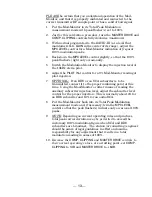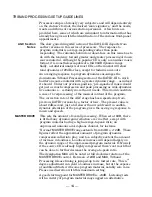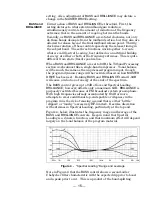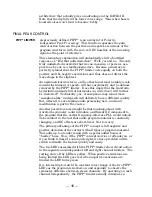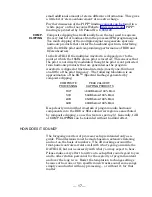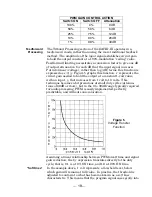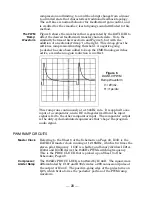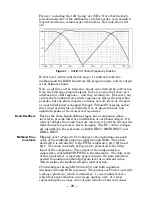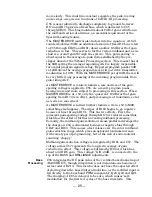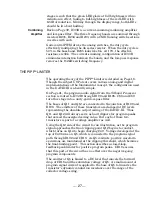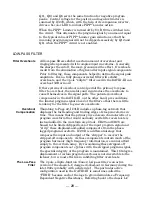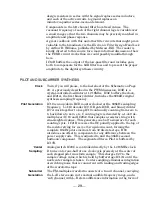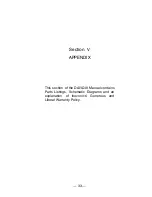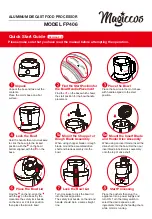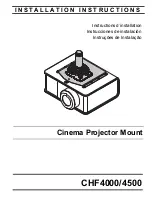
18
Section IV
CIRCUIT DESCRIPTIONS
INTRODUCTION
This Section details the circuitry of the Inovonics
DAVID-III
.
Circuit descriptions refer to the six sheets of Schematic Diagrams
contained in the Appendix, Section V, Pages 38 to 43.
Component
Annotation
DAVID-III
schematics may appear to have component reference
designations assigned in a haphazard manner. Rather than to
annotate the
schematic
in a logical sequence, we have instead chosen
to designate the
components
on the circuit board in a logical top-to-
bottom and left-to-right manner, following the physical placement of
the parts in their neat little rows. It is our expectation that this
practice will make any necessary troubleshooting easier, as a
component can physically be located quickly following analysis of
the schematic.
A PWM PRIMER
PWM Gain
Control
The
DAVID-III
utilizes Pulse-Width Modulation techniques rather
than VCAs (voltage-controlled amplifiers). This technology, as
applied to broadcast audio processing, was pioneered by Inovonics in
the early 1980s and has been refined over the years. PWM is a
simple, colorless, quasi-digital method of linear gain control that
avoids several hassles associated with more expensive and possibly
single-sourced VCA integrated circuits. Our implementation of
PWM utilizes the popular 4000-series CMOS parts that are dirt
cheap and available in any civilized area.
PWM sets the gain of an analog circuit simply by sampling, or
chopping, the analog signal; that is, turning it on and off at a rapid
rate. Consider an audio program signal which can be turned on and
off with a toggle switch. When the switch is on, attenuation is zero.
When off, attenuation is infinite. If we satisfy Dr. Nyquist s axiom
and toggle this switch at a rate at least twice that of the highest
audio frequency, linear signal attenuation becomes directly
proportional to the OFF time as depicted in the chart at the top of
the next page.
The
DAVID-III
sampling rate is 152kHz, about ten times the highest
program audio frequency. Since this is well above the Nyquist rate,
anti-aliasing and reconstruction filters can be simple and gentle.










